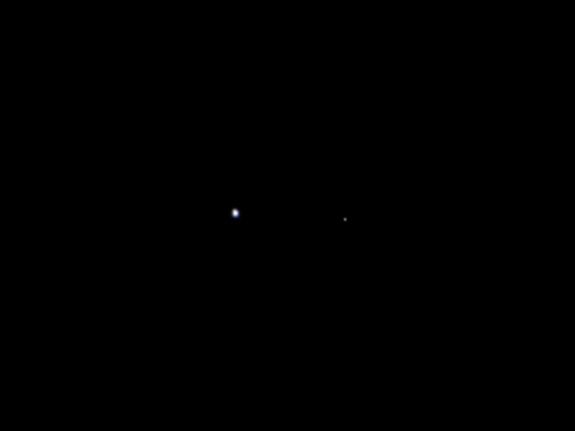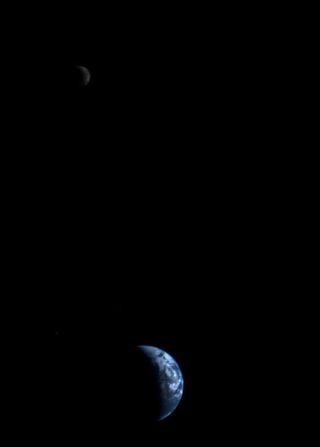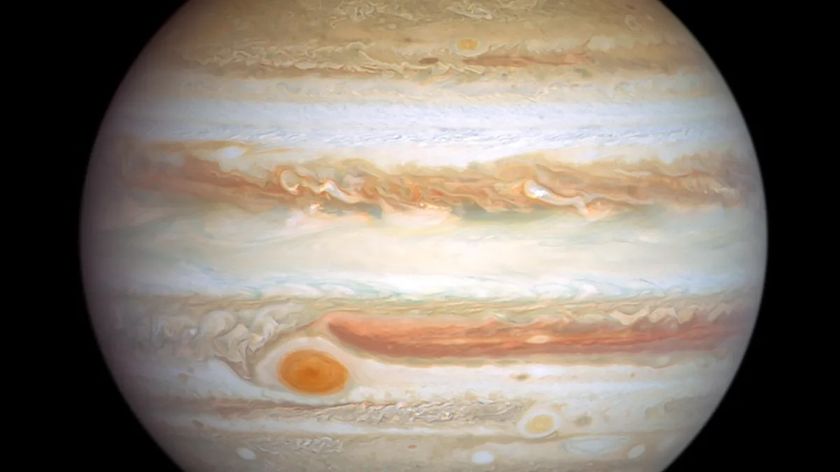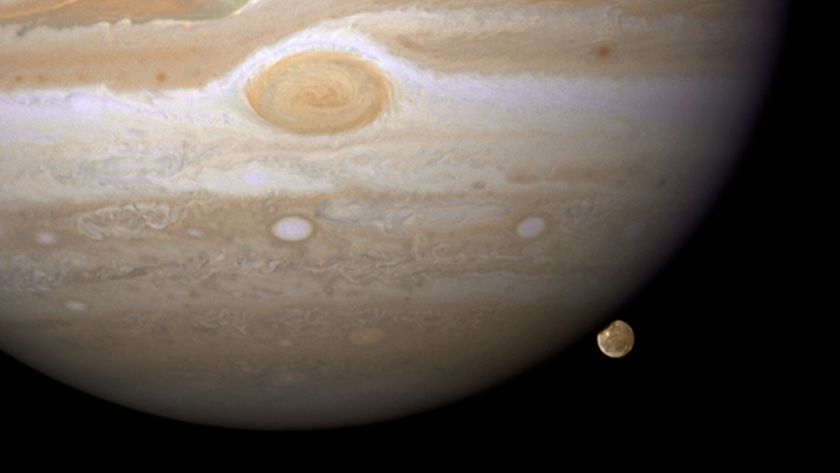
Jupiter Probe Snaps Family Photo of Earth & Moon

A NASA probe headed to Jupiter has snapped a striking photo of Earth and the moon, showing our home planet as it appears from 6 million miles away.
The Juno spacecraft took the new photo on Aug. 26 as part of a test of its camera imaging system called JunoCam. The result: a parting shot of the Earth-moon system as the probe sails on its five-year trip to Jupiter.
"This is a remarkable sight people get to see all too rarely," said Juno principal investigator Scott Bolton, of the Southwest Research Institute in San Antonio, in a statement. "This view of our planet shows how Earth looks from the outside, illustrating a special perspective of our role and place in the universe. We see a humbling yet beautiful view of ourselves." [See Juno's parting photo of Earth and the moon]
NASA released Juno's family portrait of Earth and the moon on Monday (Aug. 30). It shows the Earth as a bright white disk on a vast field of black space. The moon appears as a tiny speck of light to the Earth's right.
Juno beamed the photo home about 25 days after its Aug. 5 launch from Florida. The spacecraft covered the distance between the Earth and moon, a span of about 250,000 miles (402,000 km), in less than a single day, according to a NASA description.
NASA's $1.1 billion Juno probe headed to Jupiter is the first solar-powered mission ever aimed at the gas giant. The spacecraft will arrive in orbit around Jupiter in July 2016 and is expected to uncover new clues into the origins, atmosphere and core of the largest planet in our solar system, mission scientists have said.
By coincidence, Juno snapped its home planet photo nearly 34 years after another iconic view of Earth and the moon from a different spacecraft — the Voyager 2 probe.
Sign up for the Live Science daily newsletter now
Get the world’s most fascinating discoveries delivered straight to your inbox.

Voyager 2 took its stunning view of Earth and the moon, which actually reveals Earth's blue oceans and clouds, along with a crescent moon overhead, on Sept. 18, 1977. That photo was taken from a distance of about 7.3 million miles (11.6 million km) .
This story was provided by SPACE.com, sister site to LiveScience. You can follow SPACE.com Managing Editor Tariq Malik on Twitter @tariqjmalik. Follow SPACE.com for the latest in space science and exploration news on Twitter @Spacedotcom and on Facebook.

Tariq is the editor-in-chief of Live Science's sister site Space.com. He joined the team in 2001 as a staff writer, and later editor, focusing on human spaceflight, exploration and space science. Before joining Space.com, Tariq was a staff reporter for The Los Angeles Times, covering education and city beats in La Habra, Fullerton and Huntington Beach. He is also an Eagle Scout (yes, he has the Space Exploration merit badge) and went to Space Camp four times. He has journalism degrees from the University of Southern California and New York University.












